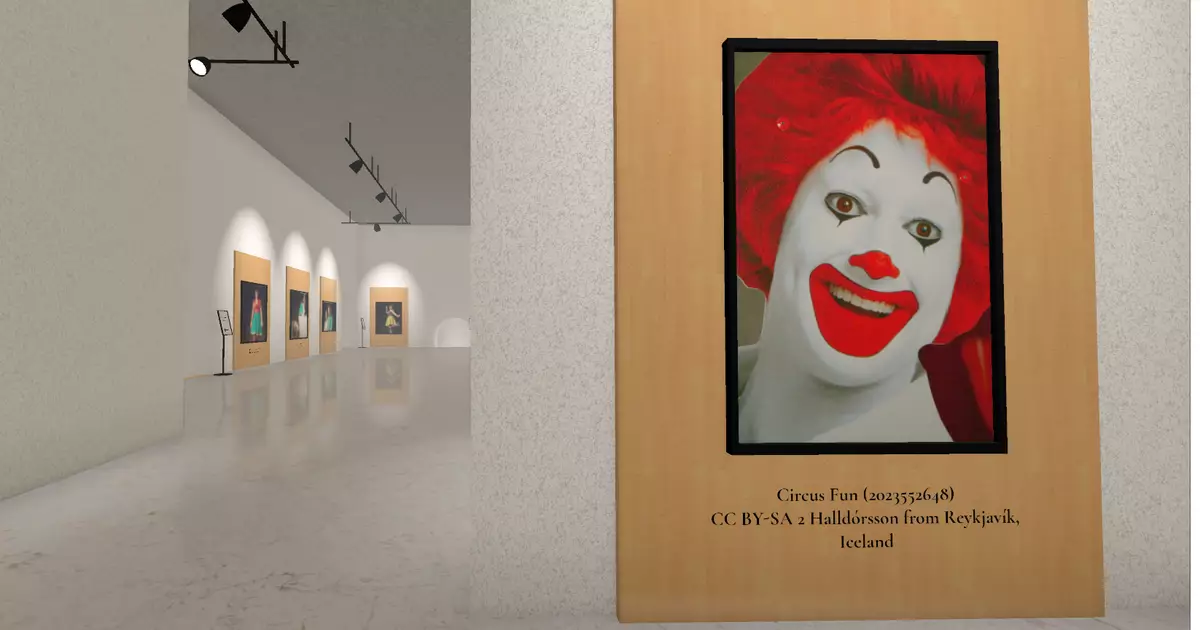The Museum of All Things, crafted with a touch of whimsy and a nod to the infinite expanse of knowledge, presents an intriguing new media phenomenon. Utilizing the Godot Engine, this virtual museum transforms the labyrinthine pathways of Wikipedia into an immersive experience that challenges the conventional methods of information retrieval. Users are invited to engage in a digital race, traversing from one page to another while navigating the uncharted terrains of human knowledge. This experience, born from the creative mind of Maya Claire and complemented by Neomoon’s ambient soundscapes, offers a fresh lens through which the social and educational prospects of digital resources can be evaluated.
What makes the Museum of All Things particularly fascinating is its ability to generate spaces dynamically from Wikipedia entries, which are virtually endless. Upon entering, visitors find themselves in a continuously changing environment where each room is reminiscent of traditional gallery spaces but infused with an essence of endless exploration. By design, users can adjust the amount of cache memory available for the experience, rendering the potential scale exhilarating. This sense of unlimited expansion draws participants into a deeper engagement with the infinite nature of knowledge itself, prompting reflections that transcend beyond the immediate act of browsing.
Unlike conventional browsing, which often employs hyperlinks as gateways to new information, the Museum opts for tangible directional signs guiding visitors to related exhibits. This artistic interpretation not only elevates the browsing experience but encourages a psychological journey into understanding the broader connections of knowledge. Here, the space acts as both sanctuary and maze, reflecting the chaotic yet structured nature of information.
As users explore the museum, they are greeted by an array of artistic design elements—polished wooden floors, marble displays, and subtle lighting—all carefully curated to enhance the experience. The environment achieves an alluring balance between the familiar aesthetics of a physical museum and the surreal qualities of a digital realm. This layered beauty smoothly orchestrates the unfolding of rooms, and the ambient sounds, including the hum of air conditioning and ambiguous background noise, contribute to a sensory immersion reminiscent of wandering through a physical gallery.
Yet, this digital environment also reveals the paradox inherent within its design; while users become engrossed in the spectacle of the museum’s layout, the essential act of acquiring information may risk overshadowing. The allure of the space, with its non-Euclidean structure and repurposed assets, presents an intoxicating distraction particularly for those who thrive on organization and definitive paths.
As one navigates the Museum of All Things, the exploration becomes more than just a pursuit of knowledge—it morphs into a psychological inquiry. The environment provides an uncanny effect, as users may find themselves grappling with feelings of existential entrapment or liberation. The metaphorical journey from “Butter Tea” to “Teeth” mirrors the human quest for understanding in an often overwhelming world of information.
Moments of reflection arise when one encounters a seemingly mundane diagram, as with the incisors of a rat—an example of how even the trivial can provoke profound self-awareness and connection to a broader narrative. Through the interrogation of our own identities, the Museum becomes a space where participants may feel both alienated and intimately connected to the subjects represented.
The Museum of All Things stands as a testament to the evolving landscape of digital knowledge exploration. It invites users not only to engage with Wikipedia in an unconventional format but prompts deeper conversations about the nature of information, perception, and identity in the digital age. Ultimately, it serves as a vivid illustration of how the collision of technology, art, and knowledge can create a rich tapestry of experience, illustrating that sometimes the journey through the labyrinth itself is just as significant as the destination. As one ventures deeper, recognizing the beauty and absurdity of information’s infinite maze, the museum becomes a space for not just learning, but also self-discovery.

